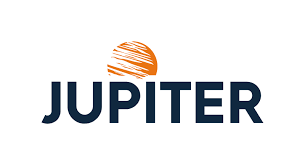Mark Nash, James Novotny and Huw Davies discuss why rapid rate increases haven’t contained inflation and what may be next for bond markets.
Taming stubborn inflation is proving to be a Herculean task for policy makers. That in turn is making reading the direction of the fixed income markets extremely difficult for investors. There’s been little respite from volatility in fixed income this year too unlike other asset classes.
In the beginning of this year, fixed income markets had a bullish overtone as they expected a slowdown in growth to ease inflationary pressures, enabling central banks to row back from their aggressive policy stance. US activity data remained strong though, and it was not until the collapse of Silicon Valley Bank that markets were convinced that the US Federal Reserve was fast approaching the end of its peak rates.
However, core inflation has stayed at elevated levels due to an imbalance between demand and supply. The personal consumption expenditures price index, the Fed’s favourite inflation gauge, is still more than twice the central bank’s target. The supply chain constraints faced during the pandemic and the geopolitical fault lines are forcing economies to rethink the prudence of relying on globalisation that had taken hold over the last three decades. This could mean lower efficiency and higher costs. The bar to generate inflation is now lower as even a slight increase in demand spurs inflation.
Tight labour markets
The tightness of the labour markets has compounded the problem, with the rise in salaries to compensate for inflation further fuelling price pressures. In the US, while average hourly earnings and unemployment rate are showing early signs of softening, the headline nonfarm payroll numbers have surprised to the upside for 14 consecutive months. While big technology and finance companies have announced job cuts, they are not representative of the pulse of the wider economy.
Economies are holding up relatively well despite the Fed’s full five percentage points rate increase since March 2022. We believe the resiliency of the economy means expectations of rate cuts won’t be met until next year. Since there are no widespread job losses, meeting everyday expenses or paying mortgages aren’t posing problems although disposable incomes have fallen. While inflation seemed to dictate the pace of rate increases, the labour market is a deciding factor on the peak level.
In our view, the labour market holds the key to everything. That’s what will decide how the current rate hiking cycle ends as factors such as wage growth, inflation, housing prices and overall demand in the economy are all linked to the job market. A strong labour market therefore leaves us unsure on developed market bonds for now, but if the recent rise in US initial claims continues then US duration suddenly looks very attractive.
Hawkish pause
At this stage, it appears as though central banks are keen to pause and wait to study the result of their actions so far. Their messaging has been consistent in this regard, with the Fed, the BOE and the ECB all confirming that they are now at or approaching their terminal rate – a level which is deemed sufficiently restrictive to wait and see how inflation behaves. If anything, they are more concerned with market pricing of rate cuts and have spoken a great deal about their ‘higher for longer’ stance.
Front end bears the brunt
Given the unprecedented pace of rate increases, the front-end of the yield curve has faced elevated volatility. The yield on the two-year Treasury note has surged about 300 basis points since last March to 4.7 percent. While yields retraced in March as US banking woes came to light, they have once again risen. Markets believe that previous tightening will be enough, a fact reflected in the flattening of yield curves and market pricing of inflation. That said, this all hinges on labour market data, especially in the US.
Taking a high conviction view in this environment is challenging as the path towards an eventual rate cut may not be linear. A Goldilocks scenario of slower growth containing inflation and in turn spurring rate cuts this year seem to have been pushed much farther than expected earlier this year. Until inflation falls to acceptable levels, interest rates will remain elevated, which means positioning will continue to be on a knife’s edge. In this context, staying low duration and being flexible may help in overcoming any near-term challenges.

